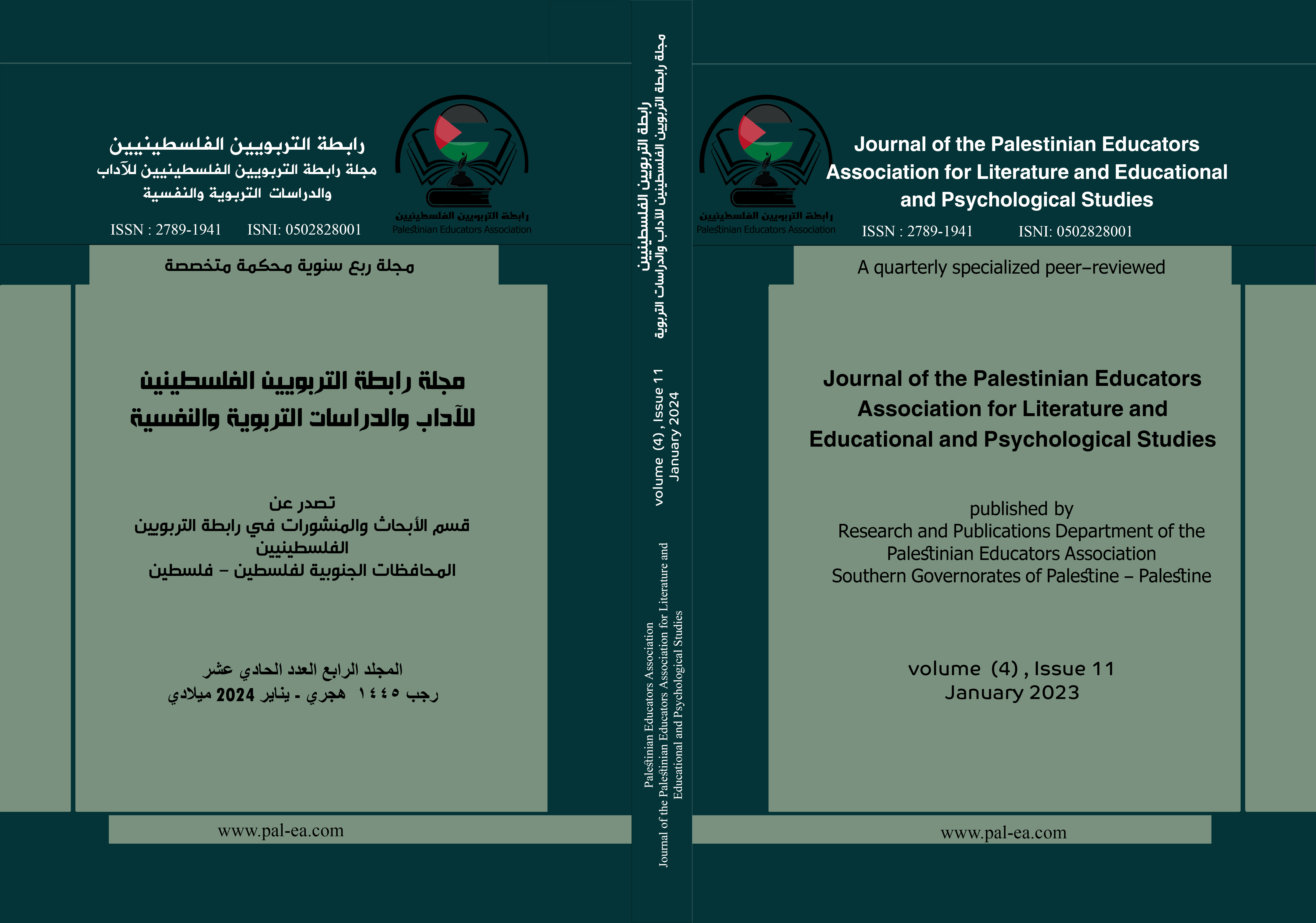The Effectiveness of Using Multisensory Strategy in Addressing Reading and Writing Difficulties among Female Students in the Resource Room: A Case Study
Abstract
Abstract:. The study aimed at identifying the effectiveness of using the multisensory strategy in addressing reading and writing difficulties among female students in the resource room. The researcher used the experimental methodology and followed the design of the one group. The study sample consisted of (3) students, selected purposefully at Beesan Elementary School for Girls. The researcher has prepared the following tools: post-test and follow-up test for Arabic language skills (reading and writing). The results: effectiveness of using the multisensory strategy in addressing reading and writing difficulties among female students in the resource room, in both the pre-test and post-test measurements, favoring the post-test, and between the post-test and follow-up test measurements favoring the follow-up test. The researcher recommends conducting further studies and research regarding the use of the multi-sensory strategy in treating reading and writing difficulties together, and training workers in schools and special education centers to use the multi-sensory strategy in teaching female students with learning difficulties and other groups.
Downloads
Downloads
Published
Issue
Section
License

This work is licensed under a Creative Commons Attribution-NonCommercial-ShareAlike 4.0 International License.
The Journal of the Palestinian Educators Association for Literature, Educational and Psychological Studies
E-issn: 2789-1941
Authors retain Copyright
The Journal of the Palestinian Educators Association for Literature, Educational and Psychological Studies allows Authors retain Copyright and grant the journal right of first publication with the work simultaneously licensed under a Creative Commons Attribution (CC-BY) 4.0 License that allows others to share the work with an acknowledgment of the work’s authorship and initial publication in this journal.
Provided they are the owners of the Copyright to their work, authors are able to enter into separate, additional contractual arrangements for the non-exclusive distribution of the journal’s published version of the work (e.g., post it to an institutional repository, in a journal or publish it in a book), with an acknowledgment of its initial publication in this journal.
Authors are permitted and encouraged to post their work online (e.g., in institutional repositories, disciplinary repositories, or on their website) prior to
and during the submission process.










